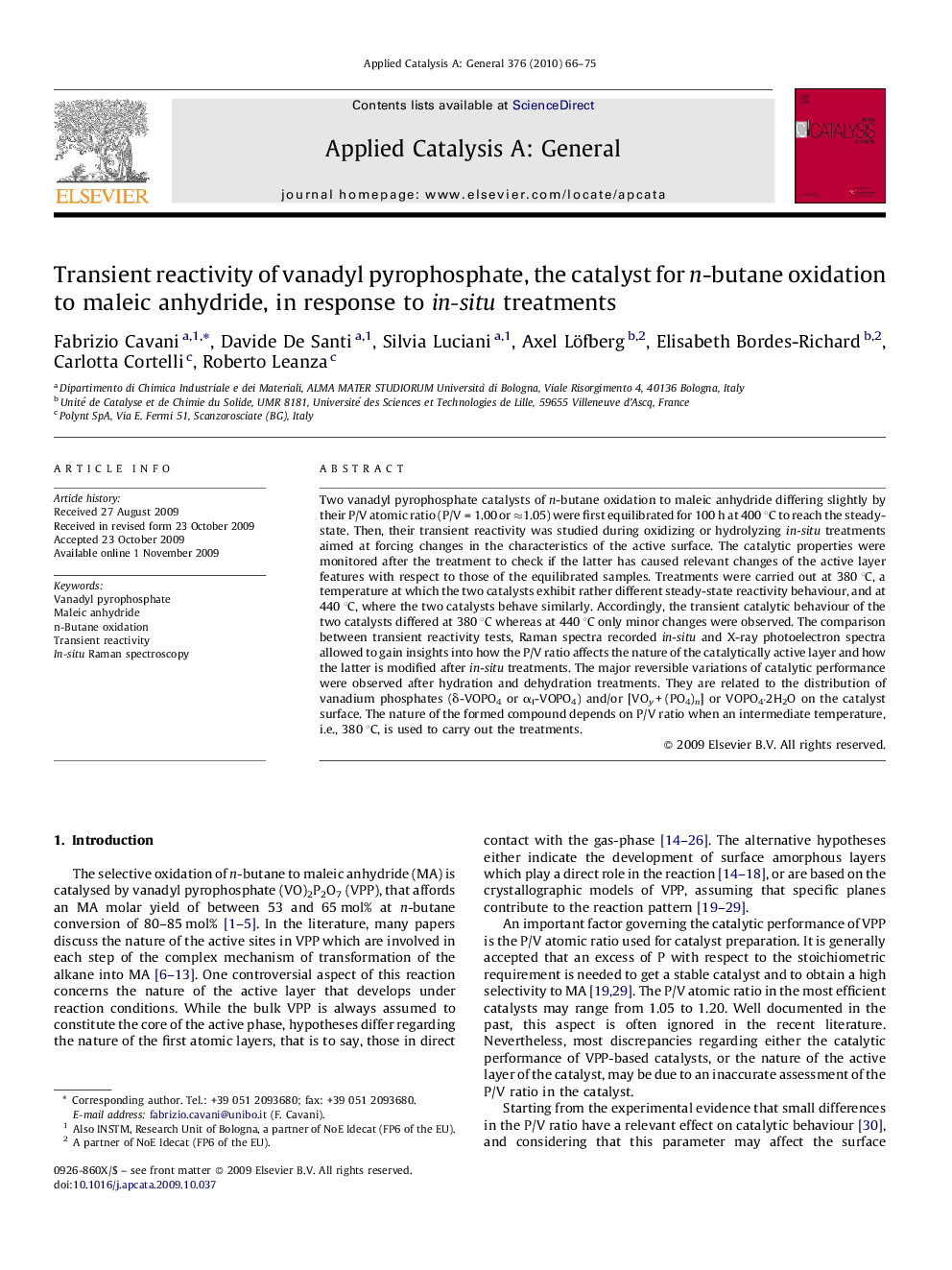| کد مقاله | کد نشریه | سال انتشار | مقاله انگلیسی | نسخه تمام متن |
|---|---|---|---|---|
| 42257 | 45917 | 2010 | 10 صفحه PDF | دانلود رایگان |

Two vanadyl pyrophosphate catalysts of n-butane oxidation to maleic anhydride differing slightly by their P/V atomic ratio (P/V = 1.00 or ≈1.05) were first equilibrated for 100 h at 400 °C to reach the steady-state. Then, their transient reactivity was studied during oxidizing or hydrolyzing in-situ treatments aimed at forcing changes in the characteristics of the active surface. The catalytic properties were monitored after the treatment to check if the latter has caused relevant changes of the active layer features with respect to those of the equilibrated samples. Treatments were carried out at 380 °C, a temperature at which the two catalysts exhibit rather different steady-state reactivity behaviour, and at 440 °C, where the two catalysts behave similarly. Accordingly, the transient catalytic behaviour of the two catalysts differed at 380 °C whereas at 440 °C only minor changes were observed. The comparison between transient reactivity tests, Raman spectra recorded in-situ and X-ray photoelectron spectra allowed to gain insights into how the P/V ratio affects the nature of the catalytically active layer and how the latter is modified after in-situ treatments. The major reversible variations of catalytic performance were observed after hydration and dehydration treatments. They are related to the distribution of vanadium phosphates (δ-VOPO4 or αI-VOPO4) and/or [VOy + (PO4)n] or VOPO4·2H2O on the catalyst surface. The nature of the formed compound depends on P/V ratio when an intermediate temperature, i.e., 380 °C, is used to carry out the treatments.
The nature of the active layer in vanadyl pyrophosphate catalysts depends on the P/V atomic ratio, temperature and partial pressure of steam. A slight excess of P, with respect to the stoichiometric requirement for vanadyl pyrophosphate, is necessary for the development of the selective compound, δ-VOPO4, over the entire range of reaction temperatures.Figure optionsDownload high-quality image (102 K)Download as PowerPoint slide
Journal: Applied Catalysis A: General - Volume 376, Issues 1–2, 31 March 2010, Pages 66–75